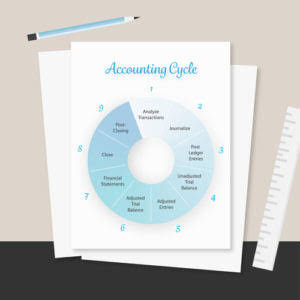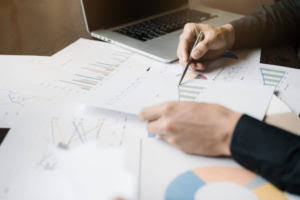Below are some examples of transactions and how they affect the accounting equation. Journal entries often use the language of debits (DR) and credits (CR). A debit refers to an increase in an asset or a decrease in a liability or shareholders’ equity. A credit in contrast refers to a decrease in an asset or an increase in a liability or shareholders’ equity.
Thus, the asset and equity sides of the transaction are equal. Accounts payable include all goods and services billed to the company by suppliers that have not yet been paid. Accrued liabilities are for goods and services that have been provided to accounting formula the company, but for which no supplier invoice has yet been received. After six months, Speakers, Inc. is growing rapidly and needs to find a new place of business. Ted decides it makes the most financial sense for Speakers, Inc. to buy a building.
Transaction 4:
This is because creditors – parties that lend money such as banks – have the first claim to a company’s assets. To begin with, it doesn’t provide an analysis of how the business is operating. Furthermore, it doesn’t totally keep accounting mistakes from being made. In any event, when the balance sheet report adjusts itself, there is still a chance of a mistake that doesn’t include the accounting equation. Understanding how the accounting equation relates to financial statements can enhance the interpretation of these reports, leading to better decision-making for investors, creditors, and management. The accounting equation stems from the double-entry bookkeeping system, a principle that mandates every financial transaction impact at least two accounts to maintain a balanced equation.
The global adherence to the double-entry accounting system makes the account keeping and tallying processes more standardized and more fool-proof. The major and often largest value assets of most companies are that company’s machinery, buildings, and property. https://www.bookstime.com/ Accounts receivable list the amounts of money owed to the company by its customers for the sale of its products. For starters, it doesn’t provide investors or other interested third parties with an analysis of how well the business is operating.
Components of the Accounting Equation
In other words, the shareholders or partners own the remainder of assets once all of the liabilities are paid off. Now, there’s an extended version of the accounting equation that includes all of the elements (described in the section above) that comprise the Owner’s Equity. Current or short-term liabilities are employee payroll, invoices, utility, and supply expenses.
What if you print the balance sheet and the total of all assets do not match the total of all liabilities and shareholders’ equity? There may be one of three underlying causes of this problem, which are noted below. In addition, the accounting equation only provides the underlying structure for how a balance sheet is devised. Any user of a balance sheet must then evaluate the resulting information to decide whether a business is sufficiently liquid and is being operated in a fiscally sound manner. In our examples below, we show how a given transaction affects the accounting equation.
What Are the Key Components in the Accounting Equation?
For example, John takes £150 from the cashier of his store to buy himself a shirt. Because he is taking £150 out of his company, £150 will be reduced from the equity of his company. Apple pays for rent ($600) and utilities ($200) expenses for a total of $800 in cash. Current assets and liabilities can be converted into cash within one year. Under the equity component of the formula, we can expand the equity component into common stock and retained earnings.




